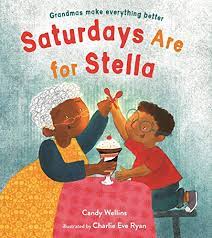The bond between grandparents and their grandchildren is a unique and cherished relationship. Through stories passed down from generation to generation, our grandparents share their wisdom, love and support. In celebration of this special bond, we’ve compiled a list of 30 endearing books about grandparents that touch upon themes like love, adventure, family history, and the power of memories.
1. “The Matchbox Diary” by Paul Fleischman
2. “The Remember Balloons” by Jessie Oliveros
3. “Song and Dance Man” by Karen Ackerman
4. “Grandma’s Purse” by Vanessa Brantley-Newton
5. “Drawn Together” by Minh Lê
6. “A Long Way From Chicago” by Richard Peck
7. “The 14th Goldfish” by Jennifer L. Holm
8. “Love, Z” by Jessie Sima
9. “Last Stop on Market Street” by Matt de la Peña
10. “Nana Upstairs & Nana Downstairs” by Tomie dePaola
11. “My Two Grannies” by Floella Benjamin
12. “Granddaddy’s Turn: A Journey to the Ballot Box” by Michael S. Bandy and Eric Stein
13. “Tea with Milk” by Allen Say
14. “Gone Fishing: A Novel in Verse” by Tamera Will Wissinger
15. “When You Meet a Bear on Broadway” by Amy Hest
16. “Ladder to the Moon” by Maya Soetoro-Ng
17. “In Plain Sight: A Game” by Richard Jackson
18. “Thunder Cake” by Patricia Polacco
19. “Finding Winnie: The True Story of the World’s Most Famous Bear” by Lindsay Mattick
20. “Grandma Gatewood’s Walk: The Inspiring Story of the Woman Who Saved the Appalachian Trail” by Ben Montgomery
21. “Just in Case You Want to Fly” by Julie Fogliano
22. “How to Babysit a Grandma” by Jean Reagan
23. “The Crossover” by Kwame Alexander
24. “Shooting Kabul” by N.H. Senzai
25. “My Grandfather’s Coat” by Jim Aylesworth
26. “Grandpa Green” by Lane Smith
27. “Where the Mountain Meets the Moon” by Grace Lin
28. “Grandfather Counts” by Andrea Cheng
29. “Grandfather’s Journey” by Allen Say
30. “Abuela” by Arthur Dorros
Each of these books highlights different aspects of the grandparent-grandchild relationship, from sharing cultural memories to exploring family dynamics and finding connection through compassion and shared interests. This collection of endearing books about grandparents will not only bring families closer together but also inspire readers to appreciate and cherish the time spent with their grandparents.











